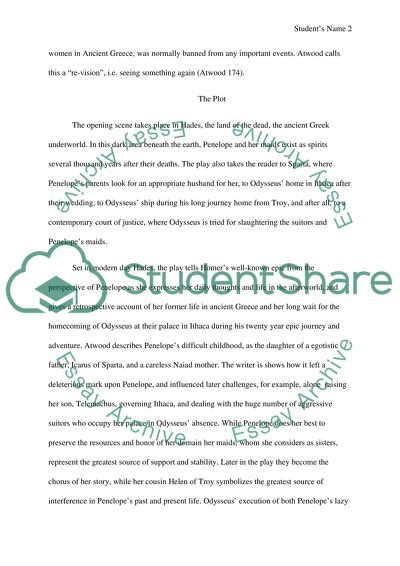Cite this document
(“How Atwood's The Penelopiad Re-Imagines Homer's The Odyssey Essay”, n.d.)
How Atwood's The Penelopiad Re-Imagines Homer's The Odyssey Essay. Retrieved from https://studentshare.org/literature/1446266-discuss-how-atwood-s-the-penelopiad-re-imagines
How Atwood's The Penelopiad Re-Imagines Homer's The Odyssey Essay. Retrieved from https://studentshare.org/literature/1446266-discuss-how-atwood-s-the-penelopiad-re-imagines
(How Atwood's The Penelopiad Re-Imagines Homer'S The Odyssey Essay)
How Atwood's The Penelopiad Re-Imagines Homer'S The Odyssey Essay. https://studentshare.org/literature/1446266-discuss-how-atwood-s-the-penelopiad-re-imagines.
How Atwood's The Penelopiad Re-Imagines Homer'S The Odyssey Essay. https://studentshare.org/literature/1446266-discuss-how-atwood-s-the-penelopiad-re-imagines.
“How Atwood's The Penelopiad Re-Imagines Homer'S The Odyssey Essay”, n.d. https://studentshare.org/literature/1446266-discuss-how-atwood-s-the-penelopiad-re-imagines.


